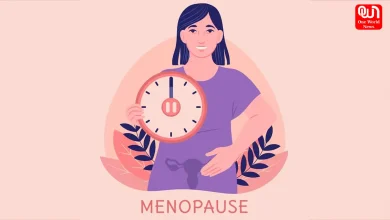Anemia’s Heart Impact: 4 ways anemia can impact the heart, cause heart failure
Explore how anemia quietly impacts the heart, leading to complications like decreased oxygen delivery, increased strain, and heightened risk of heart failure.
The Silent Threat: How Anemia Quietly Impacts the Heart and Can Lead to Heart Failure
1: Decreased Oxygen Delivery and Myocardial Ischemia
Among the many consequences of anemia, in which the red blood cell count or hemoglobin levels are inadequate, is the possibility that it interferes with the heart’s function. Hemoglobin is the particular molecule that is in charge of delivering oxygen from the lungs to all the below mentioned parts and organs, for example the heart muscle. Anemic patients usually have low hemoglobin levels and due to this, delivery of lesser oxygen is to the heart. Consequently, the heart muscle may no longer be supplied with enough oxygen which may result in disordered oxygen delivery, a medical condition referred to as myocardial ischemia. The condition of myocardial ischemia manifests itself as a consequence of insufficient supply of blood and oxygen to the heart muscle resulting in chest discomfort, breathing difficulties and even heart attacks in case left untreated.
Read more: Make Wise Choice – Eggs With Or Without Bread?
2: Increased Heart Rate and Strain.
To regulatory arterial oxygen delivery, the heart may initially compensate by speeding up, which is also known as tachycardia. This intended purpose is to increase the heart rate and subsequently blood and oxygen supply to match the body’s elevated needs. On the other hand, the gap between the increased burden of work and the heart can result to the strain over the years. If overload continues, it may provide grounds for chest pain, palpitations and, ultimately, heart failure. This anemia risk factor demonstrates a complex correlation between oxygen supply and heart functioning. Hence, the significance of a timely intervention to assist the cardiovascular system from damage arising from the strain.

3: Arrhythmias and Electrical Disruptions
The anemia causes irregular heart beats, which are clinically termed arrhythmias. Electrolyte imbalances are the consequence of anemia and the hiked workload with the heart which in turn causes disturbance in the heart’s normal electrical activities. Consequently, individuals with anemia may experience arrhythmias such as atrial fibrillation or ventricular arrhythmias. These arrhythmias make the heart to be weakened and of course increases the risks of complications. In addition to increasing the flow of oxygen to the heart, the anemia treatment stabilizes the heart’s electrical signals, also contributing to the reduction in the disease-related complications due to arrhythmias.
Read more: Do You Know Microplastics have made a home in our brains? Let’s Know What It Means !
4: Cardiac Output Changes and Symptomatology
Anemia involves a whole lot of other parameters along with the cardiac output, which is the amount of blood ejected by a minute. Initially, on the other hand, the heart can also try to catch up with this decreased ability of oxygenation by forcing its quantity up. Nevertheless, long-term suffering of excess or persistent anemia might cause the heart’s mechanisms to become also much less energetic. This can lower the cardiac output, therefore, patients may encounter some of the symptoms like irrelevance,illness, and lack of breath. The failing cardiac system can no longer supply enough air to the body cells. Patients will have more symptoms progression and they will experience their lowered quality of life. Identifying an early manifestation and treatment of anemia is an imperative measure to prevent any serious heart complications or daily life quality problems.
Conclusion:
Occasionally, uncontrolled chronic anemia can lead to cardiomegaly, the expansion of the heart muscles, as the heart accommodates to higher volume load in an attempt to return oxygen content to the normal value. This expansion causes coronary heart muscle weakness and a number of other heart failures emphasizing the fact that the quality of our blood is not independent of cardiovascular problems. Likewise, anemics who have already other heart problems, further aggravate their signs and effects, thus highlighting the necessity of early intervention and improved management protocol. Through treating anemia directly, health workers find an effective tool in eliminating the negative effects of this disease on cardiac function, improving people’s life conditions and reduced risk of heart failure.
We’re now on WhatsApp. Click to join.
As the cascading relationship between the anemia and cardiovascular fitness is disclosed by health vendors, patients will be able to get early detection and comprehensive control measures to mitigate the dangers posed by the anemia thus increase the outcomes of the infected patients. By applying a multidisciplinary strategy for both the vascular and hematologic aspects of alternative care, it is likely that the medical threat of anemia in the heart can be adequately managed, thereby leading to a better quality of life and a well prognosis of the affected people.
Like this post?
Register at One World News to never miss out on videos, celeb interviews, and best reads.










